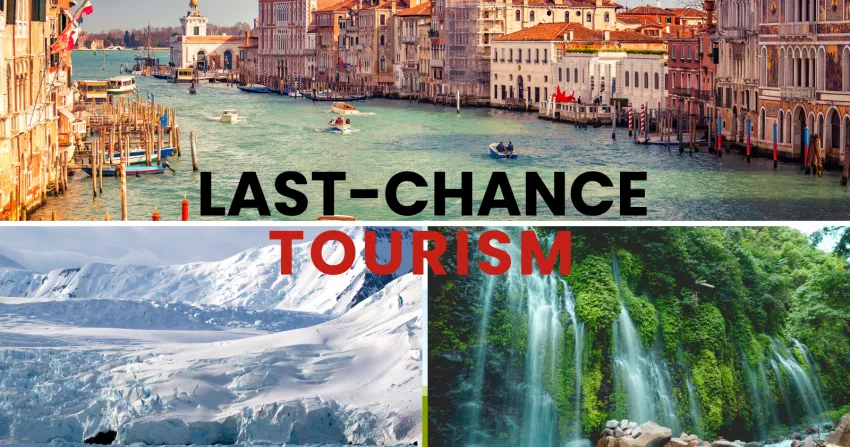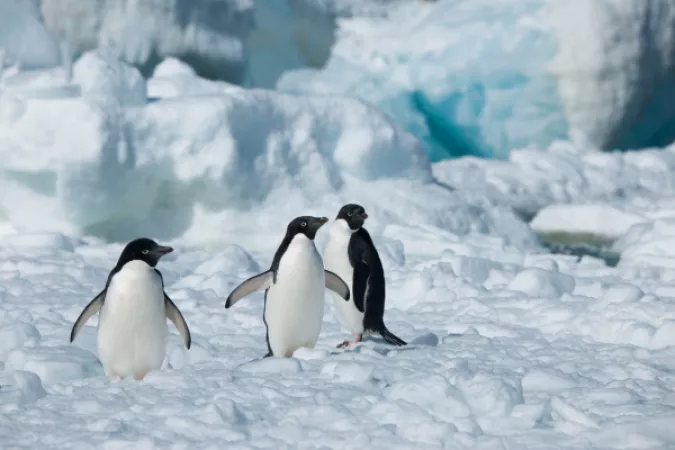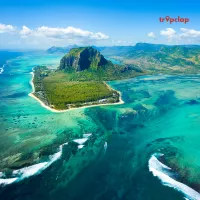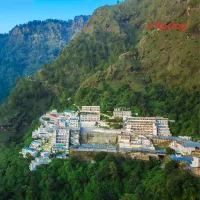Discover Last-Chance Tourism: Visit Endangered Destinations Before They Disappear

Why Last-Chance Tourism is Important?
The direct experience of visiting a vulnerable site often leaves a lasting impression that news reports or scientific studies cannot replicate. Seeing the melting ice caps of Antarctica or the bleaching coral reefs in person makes the impact of climate change tangible, fostering a deeper understanding and concern for the environment.
Funding for Conservation Efforts: Last-chance tourism can also generate much-needed funds for conservation and preservation efforts. Many of the regions under threat rely on tourism income to support environmental protection projects. For example, national parks, wildlife reserves, and heritage sites often use entrance fees to fund conservation initiatives, such as habitat restoration, wildlife monitoring, and anti-poaching patrols.
In fragile ecosystems like the Galápagos Islands or Madagascar’s rainforests, sustainable tourism can help finance the preservation of biodiversity and support local communities who depend on tourism for their livelihoods. This financial support is essential for maintaining these threatened areas, especially as government funding for environmental protection is often limited.
Ethical and Environmental Concerns: Despite the potential benefits, last-chance tourism also raises ethical concerns. One of the main dilemmas is that increased tourism can contribute to the environmental degradation of already fragile areas. The influx of visitors to delicate ecosystems can disrupt wildlife, damage habitats, and lead to pollution. For example, increased foot traffic on Mount Kilimanjaro contributes to soil erosion, while cruise ships to Antarctica can pollute the air and water.
Moreover, the carbon emissions from flights and other travel methods add to the climate change issues that threaten these destinations in the first place. This paradox puts both travelers and tourism operators in a difficult position: how can they promote awareness and funding for environmental conservation without causing further harm?
The Role of Responsible Tourism: Responsible travel is crucial in mitigating the negative effects of last-chance tourism. Tourists need to be aware of the impact their visits have on the environment and take steps to minimize their footprint. This can include choosing eco-friendly accommodations, reducing plastic waste, and supporting local businesses that prioritize sustainability. Tour operators can play a role by offering sustainable travel options, such as smaller group tours, carbon-offset flights, and environmentally conscious itineraries.
Tourists should also follow guidelines set by conservation authorities and local governments to protect fragile ecosystems. In the Galápagos Islands, for example, strict rules are in place to control the number of visitors and ensure they do not disturb the wildlife. In places like Venice, where rising sea levels and mass tourism are threatening the city, visitors are encouraged to support sustainable tourism initiatives that aim to preserve the city’s cultural heritage.
Cultural Preservation: In addition to environmental concerns, last-chance tourism also plays a role in cultural preservation. Some destinations, such as the ancient ruins of Petra in Jordan or the temples of Angkor Wat in Cambodia, are under threat due to both environmental factors and human activity. Climate change, rising sea levels, and pollution can accelerate the deterioration of these cultural landmarks, making it essential for tourists to visit responsibly.
By visiting these sites, tourists help to generate income that can be used to maintain and restore cultural heritage sites. However, it’s important that these visits are managed in a way that does not harm the structures or overwhelm the local population. Tourists should respect local customs and contribute to the preservation of the cultural identity of these regions.
Encouraging Global Action: Last-chance tourism also has the potential to inspire global action on climate change. When people visit destinations that are facing extinction, they often feel a stronger sense of urgency to advocate for environmental protection. These experiences can lead to greater involvement in conservation efforts, environmental activism, and sustainable living practices.
For example, tourists who visit the rapidly melting glaciers in Iceland may return home with a renewed commitment to reducing their carbon footprint or supporting policies aimed at reducing greenhouse gas emissions. The personal connection to these endangered places can fuel broader environmental movements and increase pressure on governments to take action.
Environmental Concerns
Popular Last-Chance Tourism Destinations
 View Gallery - 2
View Gallery - 2 - Antarctica
- Great Barrier Reef, Australia
- Venice, Italy
- The Dead Sea
- The Amazon Rainforest
- Mount Kilimanjaro, Tanzania
Ethical Considerations of Last-Chance Tourism
How to Travel Responsibly for Last-Chance Tourism:
- Choose Eco-Friendly Accommodations: Opt for hotels and lodges that focus on sustainability and minimize environmental impact.
- Limit Carbon Emissions: Use eco-friendly transport options, such as trains, buses, or carbon-offset flights.
- Support Conservation Efforts: Donate to or participate in local environmental initiatives that help protect endangered ecosystems.
- Respect Local Guidelines: Follow responsible tourism practices like staying on marked trails and avoiding wildlife disturbance.
- Pack Sustainably: Bring reusable items, reduce plastic usage, and leave no trace of waste behind.
Conclusion

Akshita Gera

Tell us about your trip

Get Custom quotes from top agents.

Choose the package you like
• Karjat • Haa Valley • Daporijo • Bageshwar • Pokhara • Chandel • Jodhpur • Auckland • Koh Samet • Jeypore • Hajo • Sawantwadi • Golden Triangle • Navadvipa • Gulmarg • Haflong • Schaffhausen • Baghmara • Doodhpathri • Mudumalai National Park • Khimsar • Lonar • Bandipur National Park • Machilipatnam • Davanagere • Dhamtari • Vindhyachal • Amaravathi • Hastinapur • Venice • Shivagange • Naples • Brussels • Visakhapatnam • Zuluk • Osian • Samalkot • Pekan • Vaishali • Sangla • Tehri Garhwal • Langkawi • Devprayag • Perhentian Islands • Mysore • Bhimtal • Palani • Seoul • Bir Billing • Ramnagaram
Kashmir Tour Packages Andaman Tour Packages Kerala Tour Packages Shimla Tour Packages Manali Tour Packages Sikkim Tour Packages Uttarakhand Tour Packages Rajasthan Tour Packages Chardham Tour Packages Gujarat Tour Packages Rameswaram Tour Packages Gangtok Tour Packages Goa Tour Packages Jaipur Tour Packages Ooty Tour Packages Jim Corbett Tour Packages Mussoorie Tour Packages Kanyakumari Tour Packages Meghalaya Tour Packages Ladakh Tour Packages
Dubai Tour Packages Bali Tour Packages Singapore Tour Packages Thailand Tour Packages Maldives Tour Packages Bhutan Tour Packages Vietnam Tour Packages Mauritius Tour Packages Nepal Tour Packages Europe Tour Packages Sri lanka Tour Packages Turkey Tour Packages Malaysia Tour Packages Azerbaijan Tour Packages


 May
May June
June July
July August
August September
September October
October November
November December
December January
January February
February March
March April
April



























